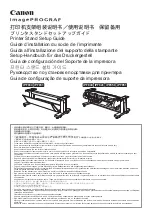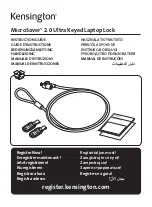
6.
After the batteries have
been installed for at
least 3 minutes,
initiate the Installation
Test Mode:
Momentarily press
the Utility button.
The green LED flashes
once, then the red LED
flashes each time the
sensor detects motion.
(The test mode times out
after 5 minutes.)
A.
Walk test the sensor. Walk outside the coverage area
and wait for the red LED to stop flashing. Step inside the
desired coverage area and observe the red LED.
B.
Repeat from various positions in the coverage area.
C.
If necessary, adjust the sensor as described in
Adjustments: PIR Sensitivity
. Repeat the walk test.
D.
If you do not observe the proper behavior,
see Troubleshooting
.
(WOS2-WM)
Daintree
®
Wireless
Occupancy Sensor
BEFORE YOU BEGIN
Read these instructions completely and carefully.
Save these instructions for future use.
1
Installation Process
Installation Guide
WOS2-WM | DT106
The Daintree wall mounted
Wireless Occupancy Sensor
(WOS2-WM)
operates seamlessly within the Daintree Networked
wireless lighting control platform. The
WOS2-WM
is a battery-
powered occupancy sensor utilizing passive infrared (PIR) sensing
technology to detect movement. As part of the Daintree sensor
product line and using open, standards based ZigBee wireless
communications, the WOS2-WM reports real-time occupancy
events to turn on lights or keep them on when movement is
detected,and turn off lights when a space is vacant. The sensor’s
off-delay timer is user-configurable from any location using
Daintree Controls Software (DCS) web application, eliminating
the need for on-site, manual sensor adjustment.
Infrared
Detection &
Test Mode LED
(red)
Network LED
(Green)
•
Keep the sensor lens clean. Avoid touching the sensor lens.
•
After first-time installation or reinstallation of a new
battery, allow up to three minutes for initialization.
1.
Determine the mounting location for the sensor
based on the desired occupancy coverage.
See
Placement
for details.
2.
Attach the mounting base to the wall in the
specified location.
3.
Record the sensor’s IEEE address and location
on the facility floor plan.
4.
Install the batteries in the orientation (+ - ) shown on the
bottom of the battery compartments.
5.
Attach the sensor’s main unit to the ball socket on the
mounting base. Adjust the angle of the sensor, then hand-
tighten the collar to secure the angle.
Risk of electrical shock. Disconnect power before servicing or
installing product.
Install in accordance with National Electric Code and local codes.
WARNING
Risk of injury. Wear safety glasses and gloves during installation and
servicing.
CAUTION





















